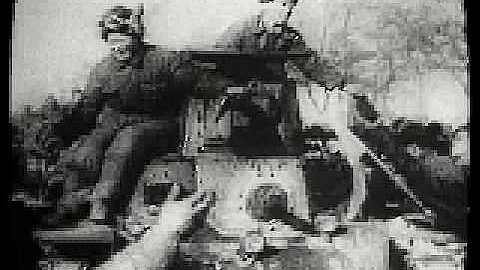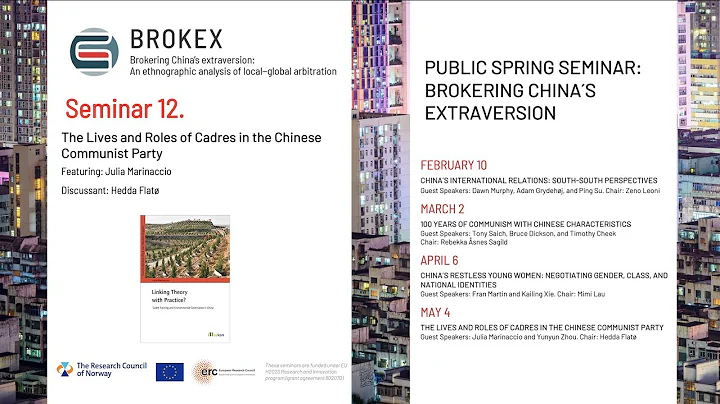If you like this article, please click "Follow" on the upper right. Thank you for your support and encouragement, and I hope it can bring you a comfortable reading experience.
On May 27, 1935, it was just dawn, and the fog in the mountains had not yet dissipated. The soldiers of the Fourth Regiment of the Second Division of the Red Army were ready to go.
The destination of their march was Luding, and Mao Zedong's order was: "Get to Luding Bridge within three days."

The site of the Red Army's forced crossing of the Dadu River
However, starting from the ferry where the Red Army was stationed at the time, Heading north to Luding, has a total of 320 miles of mountain road.
Faced with such an almost impossible task, the Fourth Regiment of the Second Division (later called the Red Fourth Regiment ) had been running all day on the 27th, and then after a long-distance attack, rushed 240 on the 28th. Here, it took only two days to reach Luding, where they completed the feat of flying to capture the Luding Bridge .
After receiving the telegram that the Red Army had successfully crossed the river, Chiang Kai-shek became furious and gave serious demerits to the Sichuan Army generals Liu Wenhui and Yang Sen who were participating in the war at the time.
While angry, Lao Jiang was also extremely shocked. The dangerous terrain and turbulent water flow of the Dadu River were comparable to a natural moat. What's more, the Sichuan Army's troops at that time were already about to form a cross-strait pincer attack on the Red Army led by Mao Zedong.

He could not imagine how Mao Zedong commanded the troops to break through the only local ferry - Ansunchang, and led the entire army to cross the river smoothly.
How did the Red Army create the miracle of marching 240 miles a day and a night? Why did Mao Zedong ask the Fourth Red Regiment to march forcefully in such a short period of time? And why did he resolutely order to go north to capture Luding Bridge?
In fact, all of this is inseparable from the advice of an old scholar on the shore.

Luding Bridge (picture source network)
The Red Army's three-day emergency march
On May 26, 1935, the Sichuan Army's pursuers were already clinging tightly behind them and were about to catch up.
In the morning, Mao Zedong and other central generals had led large troops to Anshunchang Ferry, and issued an order for the entire army to cross the Dadu River.
The soldiers of the Fourth Red Regiment received the task of capturing Luding Bridge. As for the 320-mile mountain road on the west bank of the Dadu River, they needed to complete the march in just three days.

Not only is the journey long, it also has to pass through three Sichuan Army garrison points along the way, and it faces the danger of ambush, harassment and attack by the enemy at any time.
On that day, in order to hinder the march of the Fourth Red Regiment, the Sichuan Army arranged an ambush on the way.
However, the Fourth Red Regiment did not bother much. Their goal was Luding and they could not waste time here, so forced a breakthrough and broke through while the enemy was changing ammunition.
They soon encountered the Sichuan Army Liu Wenhui's defenders at Bodhisattva Hill during their march. The unstoppable soldiers quickly defeated a battalion of enemies within an hour, and smoothly continued to break through.

On the second day, the Fourth Red Regiment set off one hour earlier than scheduled, preparing to pursue the victory and break through the Sichuan Army's second stronghold, Menghu Gang.
But just a few miles away, they received an urgent order from the correspondent Pegasus, requiring them to shorten the original three-day trip to two days:
" You must use the highest level of marching power. and decisive and mobile means to complete this glorious and great mission. "
"In this battle, you must break through the previous records of four regiments capturing Daozhou and five regiments capturing Yaxi, and running 160 miles in one day. "

" That is to say, they have one day left at this time, and the remaining distance is still 240 miles.
This means that the entire regiment's officers and soldiers need to travel around the clock for 24 hours, traveling at an average speed of more than one meter per second. The intensity of the march was, in the words of a soldier in the regiment at that time: "People will be killed by running away."
Previously, in the history of the world's army, there had never been a team that could run so fast. "No, then make history!" Regiment leader Wang Kaixiang said to the soldiers sonorously and forcefully with firm eyes.

However, his own leg had been injured in the previous battle. , he still insisted on marching with the whole regiment, requiring himself and everyone to complete the task on time regardless of the cost.
After that, they ignored the interception and harassment of the Sichuan army and forcibly broke through the enemy's two blockades, leaving only a guerrilla force to break up the rear and deal with the enemy.
The speed of our army's march has completely exceeded the enemy's imagination. The news of soon reached Sichuan Army Commander Liu Wenhui: sites were pulled out one after another, but the whereabouts of the Red Army could not be traced at all.

Liu Wenhui
Liu Wenhui was anxious at this time. You must know that the Thirty-eighth Army has now been transferred to Kangding . There are no troops stationed in Luding. If the Red Army really arrives at Luding Bridge before its own army, then the entire Luding City will be surrendered. .
He immediately called the commander of the 38th Regiment of the Sichuan Army and asked them to speed up their march and be sure to stop the Red Army on the other side of the Luding Bridge.
However, the leader of the 38th Regiment did not panic, but remained calm. He believes that the current distance between his troops and Luding is much lower than that of the other party.
As long as they can remove the wooden planks on the bridge in advance, in such a dangerous place, coupled with a little firepower suppression, the Red Army will never be able to survive with only a few iron chains.

But the reality is very ironic.
The soldiers of the Fourth Red Army marched at full speed without any rest or reorganization along the way. When was really hungry, he ate some dry food while running, and soon caught up with the Sichuan army on the other side. The two armies faced each other across the river.
Across the turbulent Dadu River, the Sichuan army did not know who the troops on the other side were. Seeing their fast marching speed, the commander of the 38th Regiment thought they were friendly troops who had been defeated and retreated at Bodhisattva Hill and were chased away by the Red Army.
He had no idea that the enemy was on the other side. He sent an advance team of 30 people and rushed to Luding to set up the flag. Then he confidently and boldly arranged for the large army to find a place to set up camp and stop to rest. .

In fact, neither the leader of the 38th Regiment nor Liu Wenhui, nor even Chiang Kai-shek, had expected that the Red Army would choose to attack Luding City northward at such an extreme speed.
Chairman's night interview with the old scholar
In fact, just the day before the Fourth Red Regiment set off for Luding, Mao Zedong was also caught in the strategic problem of how to ensure the smooth crossing of the river by the entire army.
On May 26, 1935, as the red group successfully forcibly crossed the Dadu River the day before, Mao Zedong, Zhou Enlai and others led a large force to the Ansunchang ferry.

At that time, Chiang Kai-shek's pursuit troops and the main force of the Sichuan Army were all rushing here. They would catch up with our army in less than three or four days.
Therefore, the Central Red Army must cross the river as quickly as possible.
However, after understanding the situation from the advance troops, Mao Zedong learned that only one regiment of troops had successfully reached the other side, and there was only one ship that could carry the soldiers across the river.
In addition, the water volume of the Dadu River in May is already quite large. Not only is the current fast, but there are many reefs . It took only a whole day and night for this group to cross the river.
Based on this calculation, will take at least a month to ensure that all the Red Army can cross the river.
At this time, the enemy troops were already following closely behind and were about to catch up. Several leaders made a quick decision and immediately looked for other strategies to cross the river.

Sichuan Army
Mao Zedong and his party came to the Yiwang Pavilion on the side of Anshun Field. There is a monument here, which records a battle in the late Qing Dynasty.
At that time, Shi Dakai, the Wing King of the Taiping Heavenly Kingdom, was defeated here and his entire army was annihilated.
Mao Zedong knew in his heart that under the current circumstances, Chiang Kai-shek was forcing himself to make "the second Shi Dakai" .
You must know that Shi Dakai had previously defeated Zeng Guofan's troops with more victories and even almost captured them alive, which frightened countless Qing troops. How could be completely annihilated by the Qing troops so easily?

He glanced at the rolling Dadu River, then looked at the inscription, and said with emotion:
"If Shi Dakai is a very talented strategist, since he can't cross the Dadu River, why not go straight up along the left bank and enter Xikang ?
Why not go down to Dashubao and turn back to Xichang Bazi? Or go further down to the coast of Minjiang to the east of Daliang Mountain "How can the Red Army be in the same situation now? Don’t make the same mistake as Shi Dakai?

Understanding why Shi Dakai was trapped here and the reasons for his defeat was an important breakthrough for the Red Army to successfully find other ways to cross the river.
Several leaders fell into anxious discussions, but could not reach a conclusion until dark.
Mao Zedong immediately returned to the station and mobilized soldiers to go to nearby villages. Ask the local villagers to see if they can find villagers who have some knowledge of this historical fact.
It was almost midnight, and things finally made progress. A guard found a local old man named Song Dashun.
The old man was 83 years old. He was an old scholar in the late Qing Dynasty. He also worked as a private school teacher when he was young. He had witnessed Shi Dakai's defeat with his own eyes and had a good understanding of the situation at that time.

As soon as Mao Zedong heard the guard's announcement, he immediately got up from the bed. He wanted to visit the old scholar in person.
He was accompanied by two guards and walked along the mountain road carrying a lantern until he came to the Chinese medicine shop of the old scholar's home.
Mao Zedong knocked on the door of the room. Song Dashun in the room heard the sound and immediately stepped forward to open the door, invited the group of people into the room, and poured hot water for everyone.
Although he is already over eighty years old, the old man is still full of energy. Although his back is stooped , his demeanor still reveals the charm of a scholar.
At that time, Mao Zedong first expressed his gratitude and apology to the old gentleman, saying that he was very sorry to bother him so late, but the military situation was urgent and he had to come to the gentleman immediately for advice, hoping for his understanding.

"Old man, do you know what it was like when Shi Dakai fell out of battle?" Mao Zedong asked the old man humbly.
The old scholar immediately became energetic. He had witnessed Shi Dakai's defeat, and knew the local geographical conditions, customs and customs very well. When he learned that he could provide help to the Red Army revolution, he immediately reported what he knew about the situation. Come together.
The old man said that when Shi Dakai led his army to Anshun Field, he was faced with the dilemma of "going westward to the Songlin River and being blocked by thousands of households, and going east to retreat to the steep hills and mountains."
That is to say, if the army advances in the east and west directions, it will either have to face rapid rivers or be blocked by tall and steep mountains, and it will need to take great risks.

"What if it is possible to face north and south? " Mao Zedong asked.
The old man waved his hand meaningfully and said:
"Go north to the Tang Dynasty General Soldiers Tigers ensconce Copper River ; If you want to go south, black abandoned children and rotten trees will cover the sky, it will not work in the north and south."
"This Shi Dakai chose at that time to let all the soldiers cross the river by boat, but the danger of the water here was completely beyond his imagination. the speed of crossing the river was extremely slow, and he was soon overtaken by the Qing army's pursuers, and was all Besieged in Anshun Field. ”
Hearing this, Mao Zedong understood more clearly the dilemma he faced at this time. In fact, the situation encountered by the Red Army troops in many aspects was exactly the same as that of Shi Dakai.

First of all, the marching paths of the two troops are very similar.
At that time, Shi Dakai was jealous of the officials within the Taiping Heavenly Kingdom. In order to save his life, he led his army away and decided to mediate with the Qing army alone..However, he was not willing to betray the results of the uprising, and he was naturally unwilling to seize the base of the Taiping Heavenly Kingdom.
So he left Tianjing at that time, went all the way south, and then headed west. decided to make Sichuan, the land of abundance, his base.
The Red Army embarked on the Long March road after several counter-revolutionary "encirclement and suppression" campaigns by Chiang Kai-shek.
Previously, passed through Hunan, Guizhou, Yunnan and other places, all the way to Sichuan. is preparing to cross the Dadu River and go northward, setting northern Sichuan as the new Soviet area.

was also being pursued and intercepted by the enemy, but the situation of the Red Army at this time was more difficult than what Shi Dakai's troops faced at that time.
Both teams arrived at Anshun Field in May. Although the Red Army was about 10 days later than Shi Dakai, it happened to coincide with the flood season of the Dadu River.
The surging water meets the rocks at the bottom of the river, forming countless undercurrents and whirlpools. Such water momentum not only greatly slows down the speed of boats crossing the river, but even if you are not careful, people and boats may be involved in the undercurrent.
How to find a chance of survival in a dangerous situation? After Mao Zedong thought for a long time, he asked the old scholar: "I learned that there is another crossing point in the upper reaches of the river, which is the Luding Bridge in Luding. In your opinion, is it feasible?"
The old scholar stroked his beard , looked a little worried, but still nodded, saying that he could give it a try to gain a glimmer of hope.
"But this journey may also face many dangers and hardships."

The road to revolution faces risks at every turn, but the whole army has always maintained its determination to revolution. What kind of hardships can't be tolerated!
As soon as Mao Zedong heard that things had turned around, his frown relaxed a little, and he immediately made a decision in his heart.
After thanking the old gentleman, Mao Zedong and the guards prepared to return to the team to make arrangements.
But just after leaving the Chinese medicine shop, after walking about ten steps, the old scholar opened the door again and stopped them.
He told Mao Zedong: "It is not suitable to stay here for a long time, you must leave as soon as possible!"
It was precisely because of obeying the old gentleman's words that the Red Army's 20,000 troops finally crossed the river smoothly.

"The iron cables across the Dadu Bridge are cold"
On the night of May 26, Mao Zedong returned to the command station and had detailed discussions with Zhou Enlai and others. Taking Shi Dakai's defeat as a lesson, he set off immediately without delay.
After a comprehensive analysis of the enemy situation between Chiang Kai-shek and the Sichuan Army, Mao Zedong issued an order:
The troops were divided into two groups. One group followed Liu Bocheng and Nie Rongzhen and used boats to cross the river. The other group went north along the west bank of the river, led by Lin Biao " Using a forced march to seize another crossing point on the upper reaches of the Dadu River, the Luding Bridge. "

The Red Fourth Regiment, which received the second mission, finally arrived at the Luding Bridge on May 29 before the Sichuan Army's reinforcements.
But at that time, the wooden planks of the bridge deck had been removed by the 30-person advance force of the 38th Regiment of the Sichuan Army. At a distance of more than 100 meters, what was left to them was an iron chain bridge over the stormy waves.
After advancing for more than 200 miles day and night without rest, many soldiers were exhausted. They relied entirely on their inner perseverance and revolutionary determination to survive until now.
But at this time, there was no time left for them to recharge their batteries, and they must immediately discuss a strategy to cross the bridge.

Since the Luding Bridge was the only channel connecting the two sides of the river, Liu Wenhui was naturally reluctant to blow up the bridge completely, so he only chose to remove the bridge deck.
The west bank of the Luding River section is the towering Gongga Mountain, and the east bank is the cliffy Erlang Mountain . The Dadu River flows between the two mountains.
Thirteen iron chains pinged in the howling wind, and the Sichuan army on the other side was shouting: "Fly over here if you dare!" Why not fly over! "
They expected that even if the Red Army had wings, it would not be able to fly over this bare iron chain bridge.

However, the Fourth Red Regiment, with their iron will, did not comply with the enemy's intentions. Their next feat once again shocked the Sichuan troops on the other side. After
regiment leader Wang Kaixiang led his men to reconnoiter the complete terrain, he made a plan to seize the Luding Bridge by flying:
- Arrange two battalions of troops on the riverside, use intensive firepower to cover the vanguard troops crossing the river, and beware of both sides at the same time There were enemy reinforcements;
- the remaining troops were divided into three echelons, assaulting, building bridges, and crossing the river.

Wang Kaixiang
The Fourth Red Regiment selected 22 commandos led by Liao Dazhu as the first echelon , crawling across the river from the chain bridge; the second echelon borrowed wooden planks from the villagers and built a bridge while crossing the river; Echelon firepower keeps up.
At 4 o'clock in the afternoon, the Red Army officially launched its charge.
As the division buglers all sounded the earth-shattering charge horns, a line of fire was set up along the coast, which instantly shocked the enemies on the other side.

 2 stormtroopers held a submachine gun in one hand, a broken iron sheet in the other, and a saber on their backs, and they began to charge into the battle. These broken iron sheets were borrowed from the villagers and were their only defensive weapons.
2 stormtroopers held a submachine gun in one hand, a broken iron sheet in the other, and a saber on their backs, and they began to charge into the battle. These broken iron sheets were borrowed from the villagers and were their only defensive weapons.
They knew that this battle was extremely difficult and dangerous, and that if they were not careful, they would die in the abyss, but they still stepped onto the iron bridge resolutely and used their bodies to clear a path for their comrades.
The Sichuan army on the other side never thought that our army would forcefully break through the Iron Chain Bridge in such a way with no retreat.
In order to cover the smooth crossing of the river for the 22 warriors, the regiment leader Wang Kaixiang ordered all firepower not to stop. He said: "This battle must be vigorous."

The commander of the 38th Regiment of the Sichuan Army was obviously driven by this almost crazy attack. Dafa was so frightened that he quickly called Liu Wenhui and asked for support.
But the other party told him that now they can only rely on themselves to support themselves. Not only are there no reinforcements, but their rear, south of Luding City, has also been bitten by the Red Army.
It turned out that after forcibly crossing the Dadu River, the Red Regiment that followed along the other side of the river had also launched an offensive against the Sichuan army's rear siege. It had already broken through their three blockades.
The commandos here also continued to press closer against the fire from the opposite side. When they ran out of bullets, they threw grenades towards the enemy's position.

The second echelon followed closely behind, braving the enemy's artillery fire, holding on to the iron locks, crawling while laying the bridge planks.
Seeing that the stormtroopers were about to rush across the bridge, the enemy troops were completely intimidated by the heroic and fearless momentum of the warriors and began to disorder themselves.
The panicked Sichuan troops had lost the courage to resist. They set fire to all the removed wooden boards and straw in an attempt to block the footsteps of our soldiers, and then all of them escaped from the fortifications and fled in all directions.
But our soldiers ignored the billowing flames and rushed directly into the sea of fire.
In the end, the stormtroopers broke through the enemy's suppression at the cost of losing three warriors, and led the soldiers of the Fourth Red Regiment across the river smoothly.
Subsequently, the following Red Army soldiers quickly followed up. Within two hours, all the remaining enemy troops were annihilated, successfully captured the Luding Bridge, and successfully joined forces with the Red Army Regiment that invaded from the south of the city.
Our army thus completely occupied Luding City.
After this battle, all the subsequent main forces of the Red Army were able to successfully cross the river from Luding Bridge, and the entire army embarked on a long journey.
We won, and Chiang Kai-shek's hope that Mao Zedong and our army would become the "second Shi Dakai" was shattered.

After Mao Zedong learned the news from the front line, he finally dropped the huge stone in his heart. He said:
"Our actions have proved that the Red Army led by the Communist Party of China is not the Taiping Army, and Mr. Zhu and I are not the 'Second Shi Dakai'."Chiang Kai-shek's wishful thinking was wrong again! "
Survived from a desperate situation
The Red Army relied on the leaders' extraordinary foresight and the soldiers' excellent mental and physical fitness, and the entire army united as one to win this hard-won victory.
There is no constant force, and there is no constant water. Form.
With the help of the old scholar, Mao Zedong led the heroic troops, strived to take the initiative in passivity, found hope in desperate situations, reversed the situation of the war, saved 20,000 Red Army, and saved the revolution from fire and water. in.

“Thirteen iron chains can carry a republic. "
The warriors of the Fourth Red Regiment not only set a unique marching record in history, but also wrote a feat that will be passed down through the ages on the Iron Chain Bridge. They used their flesh and blood to build a solid bridge for us in New China.
 979 In 2007, Marshal Nie Rongzhen wrote a poem for the Dadu River Memorial Hall:
979 In 2007, Marshal Nie Rongzhen wrote a poem for the Dadu River Memorial Hall: " Anshun rushed to cross, Dadu bravely seized the bridge." The two armies were on the river, and Luding saw the difference. "
The Red Army's steely will and spirit of unnecessary sacrifice will be admired by the world for generations to come.

Today, 25 years have passed since the victory of the Red Army's Long March, but while the people are enjoying a stable life, they must not forget the revolutionary martyrs. Their sacrifice and dedication.
They gritted their teeth and carried the cannon to ignite the fire of life, which illuminated the current situation of peaceful reunification and people's happiness.
The blood and blood of the revolutionary martyrs formed the monument of victory, and the leadership of the Communist Party created China. What do readers think of the unstoppable revolutionary martyrs in the Battle of Luding Bridge? Please leave your thoughts in the comment area
.




















